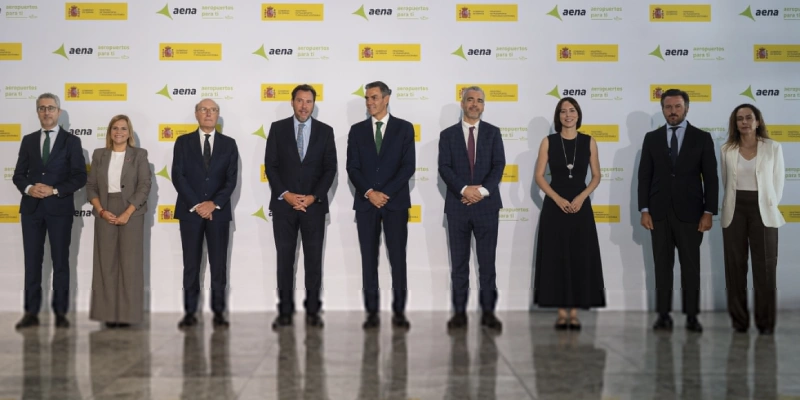The President of the Government of Spain, Pedro Sánchez, announced at Alicante-Elche Miguel Hernández Airport the largest investment plan from Aena in twenty years. The company will allocate a total of €12.888 billion, of which €9.991 billion will be regulated investments, with the remainder assigned to projects linked to commercial activity. The objective is to prepare the infrastructure for growing demand, maintain safety and quality standards, and advance environmental sustainability.
A Public-Private Model Driving the Economy
Sánchez emphasized that Aena’s hybrid public-private model has solidified the company’s position as the world’s largest airport operator by passenger traffic and market capitalization. He highlighted that this model combines management excellence, competitive fees, and strong financial results, while also generating synergies that boost the competitiveness of the economy, tourism, and regional connectivity.
“The model rests on two pillars: the excellent management of 46 airports and 2 heliports in Spain, and a stable regulatory framework that provides certainty to investors and operators,” added the head of the government.
Perspective from the Ministry of Transport
The Minister of Transport and Sustainable Mobility, Óscar Puente, stressed that the Spanish airport network is among the most modern and competitive in the world, thanks to significant investments made in recent decades, particularly in the 2000s. He noted that the infrastructures offer optimal services with the lowest fees in Europe and that the new plan will be developed without losing this advantage.
→ Iberia Strengthens Its Global Network This Winter with New Routes and Increased Frequencies
Puente indicated that this announcement marks the start of the process to draft and approve the Airport Regulation Document (DORA 3). Shortly, the consultation phase with airlines will open, and the proposal will be submitted to the Directorate General for Civil Aviation and the CNMC (National Markets and Competition Commission), in addition to being presented to the Airport Coordination Committees in each region.
Investments Based on Technical, Not Political, Criteria
The Chairman of Aena, Maurici Lucena, reiterated that investment decisions are based exclusively on technical estimates of air traffic demand, in accordance with Law 18/2014, and not on political or regional distribution criteria. He recalled that the DORA is the essential instrument for guaranteeing the accessibility, sufficiency, and suitability of infrastructure and the provision of airport services.
Lucena underscored that the fee model is designed to enable investments that ensure capacity, safety, and sustainability, without relinquishing some of the most competitive fees in Europe.
Priority Investment Areas
Resources will be concentrated on:
- Terminals and airfields.
- Information technology and digitalization.
- Security and airport services.
- Sustainability and innovation projects.
- Enhanced cybersecurity.
Some of these actions have already begun in the 2022-2026 period but will be intensified between 2027 and 2031. A key objective will be to progress towards the commitment of Net Zero emissions by 2030.
Next Steps
The investment plan will be discussed with airlines, regional committees, and the competent authorities before being integrated into the 2027-2031 Airport Planning and Regulation Document. After completing this regulated process, the proposal must receive final approval from the Council of Ministers.
With this announcement, Aena lays the groundwork for an unprecedented modernization that strengthens Spain’s position as a global benchmark in airport efficiency and competitiveness.
Related Topics
Singapore Will Apply World’s First Green Fuel Tax on Airline Tickets to Promote its Use
Hundreds of Flights Delayed at Delhi Airport Due to Air Traffic System Failure
IndiGo Reports Larger-Than-Expected Losses in Last Quarter
Virgin Atlantic to Launch London to Seoul Flights from March 2026
Un apasionado por la aviación, Fundador y CEO de Aviación al Día.
